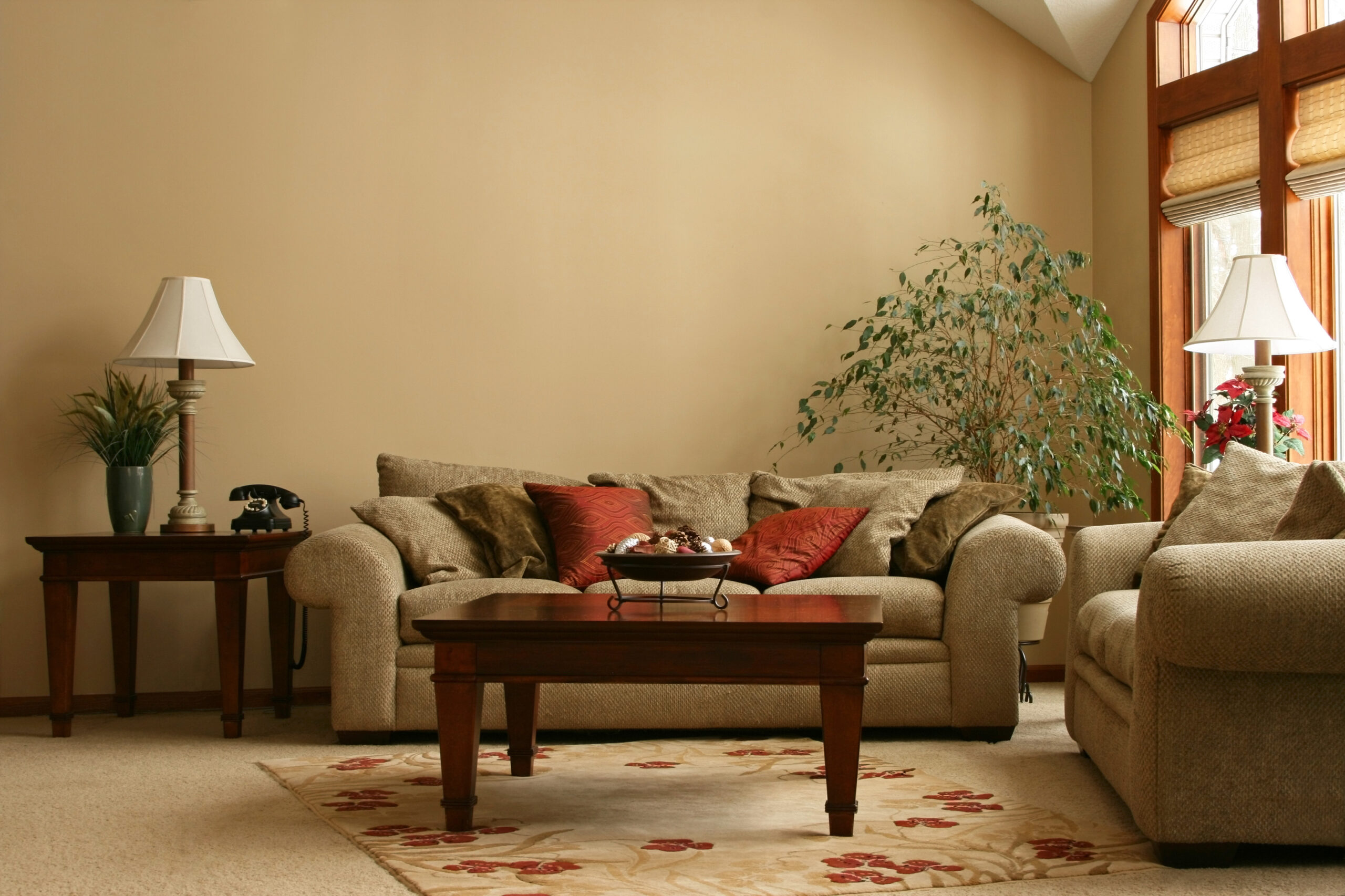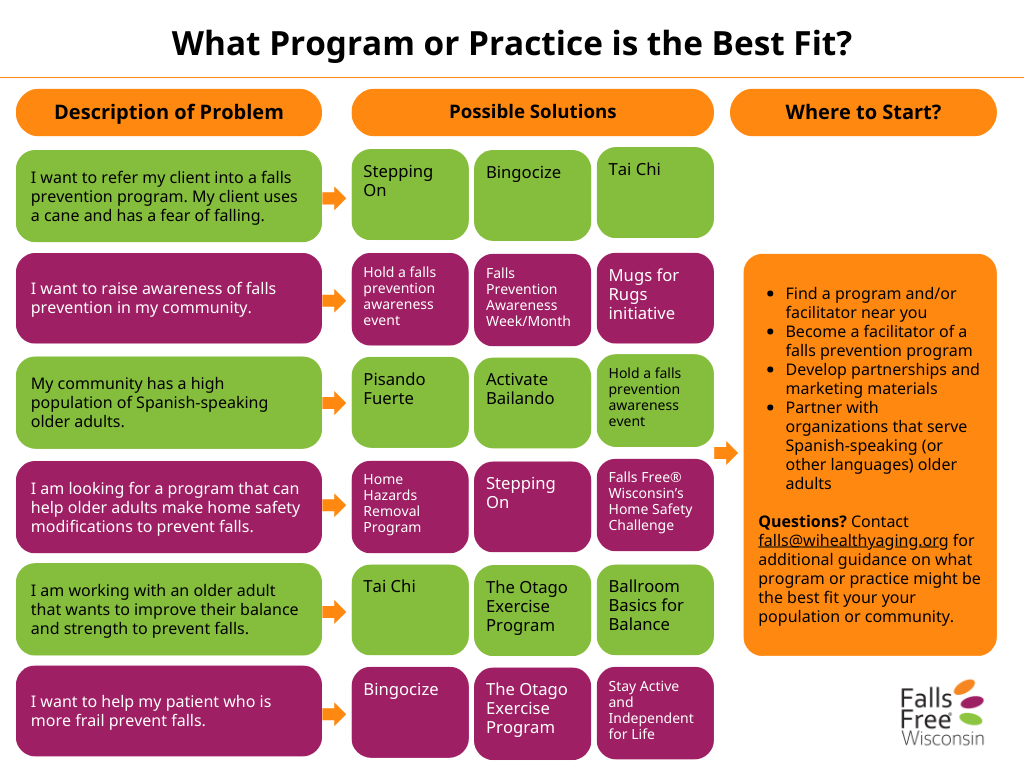Did you know? Most falls happen at home! There are many things that you can do to make your home safer and more accessible to prevent falls and stay independent at home.
Spot the hazards
What hazards do you see in the below image? Click the dot to reveal.
What to look for:
Clutter
On top of everyday clutter like dirty laundry or bills, over the years, things can pile up! Newspapers, medical documents, artwork from the grandkids, tools, books, and more fill tables, sit on chairs, and make piles on the floor. It can feel overwhelming to reduce clutter and you may not know where to start, but it is important to keep walkways, staircases, and other areas where you walk tidy.
Here are some tips on how to make cleaning up clutter more manageable:
Does your laundry usually sit on the floor until it’s laundry day? Do the books never quite make it back on the bookshelf? Make it a habit to take a minute or two to clean up as you go instead of waiting for things to pile up.
Develop a filing system so that you can keep important documents in one place and off counters and floors.
Make it fun! Put on your favorite music as you declutter an area of your home.
Don’t do it all at once. Set aside 15 minutes each day to de-clutter in different areas. Start with clutter that is on the floor or staircases.
In addition to clutter, cords from lamps, tools and extension cords can increase your risk of falling. To keep cords and wires out of the way:
Tape them to the wall or floor near the baseboard.
Have an electrician install another outlet.
Roll wires and cords up.
Lighting
Having good lighting is important to ensure we see fall hazards and things like changes in flooring or pavement, a wet floor, or objects in the way. Poor lighting, especially in staircases, increases the risk of a fall. To improve lighting:
Change out any burnt-out bulbs as soon as they go out. If you can’t reach the bulb and don’t have good strength or balance to use a step stool, ask a friend, neighbor, or family member for help. Consider using LED lightbulbs as they last longer and don’t need to be changed out as often.
Put nightlights in hallways, bedrooms, and bathrooms.
Install additional lights in dimly lit places such as staircases.
Always turn on the lights before going up and down stairs or down hallways.
If you have light switches that are in odd-to-reach places, such as in the middle of a room, ensure you have a path free of clutter and other fall hazards to the switch(es).
Rugs and mats
It’s almost impossible to find a house or apartment without some sort of throw or scatter rug or mat. However, throw rugs are a very common fall hazard and should be used with care. Throw rugs often bunch up, which can cause you to lose your balance and fall. If you must keep a rug or mat in your home, reduce your risk of falling by making sure the mat doesn’t have corners or edges that are turned up. The best mats have heavy-backed rubber bottoms, so they stay in place.
If you use a cane or walker, you may be more at risk of tripping over a throw rug, as these devices tend to get caught on the edge of the rug and could cause you to lose your balance and fall. Studies show that falls due to throw rugs can cause severe injury. To maintain your independence, it is best to reduce your risk by getting rid of throw rugs.
Rugs and mats in your bathroom pose an additional risk. Instead of using a mat in your bathtub, install anti-slip adhesive safety strips, which don’t bunch up and slip like a mat might. To keep your bathroom floor dry, make sure any bathmats you use have non-slip bottoms and won’t slip out from under your feet.
I celebrated my 65th birthday by going through my house and getting rid of my throw rugs! I took it seriously.
Walking Surfaces
Be aware of uneven pathways and slippery surfaces in and around the home.
If there’s snow, ice, or rain, take extra caution and scan ahead for hazards and wet floors. Be sure pathways outside are shoveled and free from ice. Watch out for wet leaves and grass.
Pets
We might hate to admit it, but our furry friends can put us at risk of falling! Even if you don’t have a pet yourself, if you visit friends or relatives with pets, it’s important to be aware of your surroundings – especially if pets are underfoot!
While great companions, pets are a common fall hazard. Here are some things you can do to stay safe around your pets:
Clean up your pet’s toys frequently and keep your pet’s bed and food and water dishes out of walkways.
Consider getting a collar for your pet that lights up or has bells on it. This can be especially important if you have a brown pet and brown floors – they can easily blend in! Think about ways to contrast the pet against the floors, like putting them in a brightly colored collar or harness.
Use gates or keep your pet in a separate room to keep them out of the way when you are moving around the house, or doing things like cooking meals.
Use motion night lights in case your pet is moving around at night at the same time you are.
Consider obedience training to help your pet learn not to jump on you or to stay when told to.
Be aware! Know that at any time your pet could cross your path. Take your time and don’t rush.
Pulling from your pet can knock you off your feet. Consider obedience training to help or, take your dog to the dog park so they can have freedom to run around without pulling you (and stay out of their way while they run).
Feed your pets away from traffic areas to avoid potential hazards from spilled water or food.
Additional Tips
Make items accessible. Keep items that you use often within reach. For example, if you have a slow cooker to make meals in, consider keeping it on the countertop instead of in a high cupboard so you don’t have to reach up and carry it around your kitchen. This will help you avoid climbing ladders, chairs, or step stools, which you could lose your balance on, to reach items on higher shelves.
Plan ahead. If a holiday is coming up and your decorations are in the garage on high shelves out of your reach, and your balance or strength isn’t good, consider asking a family member or neighbor when they are visiting if they can bring these items down for you.
Don’t rush. When you are in a hurry, your guard may be down and you may not notice fall hazards in your way, such as a curb or your pet. While it may be tempting to rush, especially if you are running behind, take a minute to slow down and pay attention to your surroundings.
Renting? Talk to your landlord. Many of these changes can still be made to help make your house or apartment safer!
Have three points of contact no matter what you are doing. For example, if you are walking up your staircase or getting in and out of the shower, you want to have two hands and one foot or two feet and one hand in contact with something sturdy.
List Item
Go through our interactive home safety challenge today to learn more about things in your home that may lead to falls.
Share this page’s information with others via the page download:


